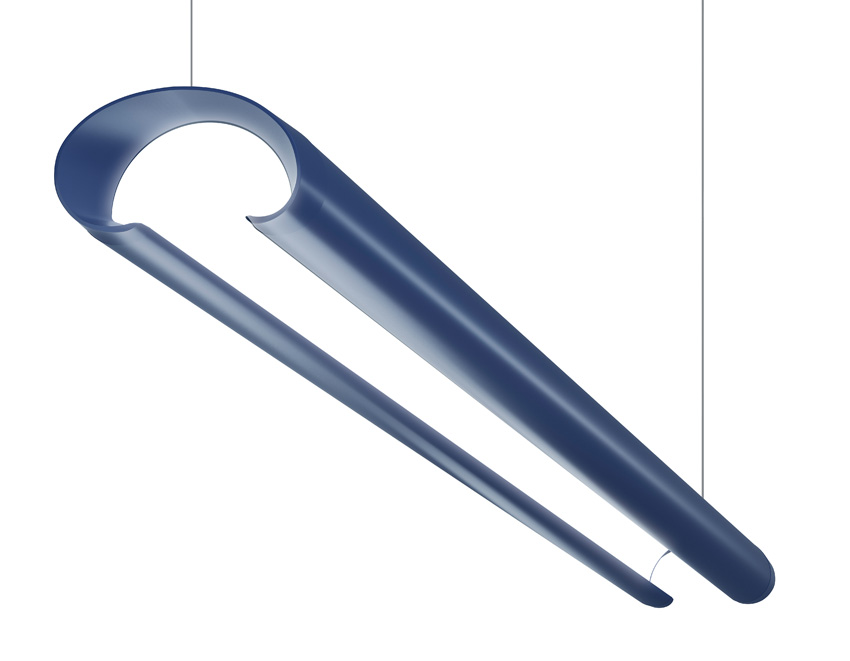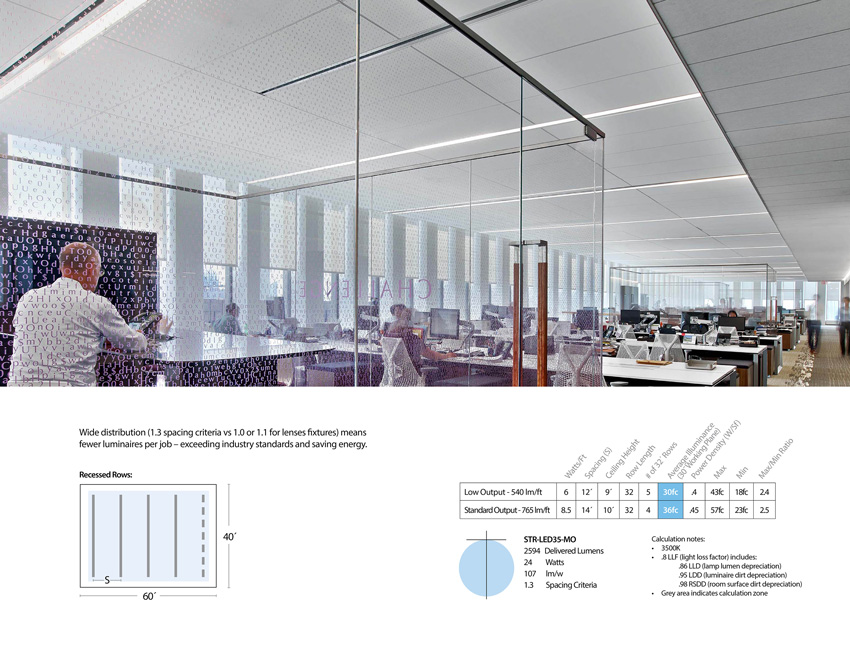Linear Lighting Frenzy
Recessed Linear Ups Its Game with the Introduction of Veiled Ambient
While recessed linear is certainly an improvement over the troffers of the past, it is far from flawless. Contractors struggle with proper installation, and often the lenses are too loose or too tight, and they pop out or won’t go in at all. Lenses require frequent maintenance, as they trap dirt and bugs—and while designers love the idea of long lines of light, the reality doesn’t quite deliver on the promise. A closer look reveals interruptions to the clean, linear effect due to seams between lenses and the often bright/uneven stripe of the lens from direct-view mounted LEDs. So where to from here?
Manufacturers began looking upward—all the way to the sky—for inspiration. Intrigued by the work of artist James Turrell, one manufacturer set out to mimic some of what Turrell was accomplishing in his work with light as art, where illumination is present but the source is barely perceptible. “Veiled ambient” is the moniker for this breakthrough form of linear lighting. Minimalist and almost ethereal, veiled ambient presents an option never before available, where long, seamless, lens-less channels of light cast a uniform glow, eliminating many of the issues with previous recessed linear fixtures.
How Does Veiled Ambient Light Work
Veiled ambient’s unique, highly engineered reflector material cleans the light, distributing it far more widely, leading to multiple benefits. Not only are walls and ceilings more evenly illuminated, but the cave effect from earlier LED linear fixtures is no longer a concern. The light that emanates has a soft, homogeneous effect with vastly improved vertical illumination. The level of intensity is the same off to the side as directly below, minimizing glare and leaving work and classroom spaces free of striations and dark spots on desks.

Veiled ambient lighting was chosen for these 30-foot ceilings in part because of its simpler installation and low maintenance—there are no lenses that can crack or attract insects and dirt.
Architect: Huntsman Architectural Group
Lighting Designer: Melinda Morrison
When designing space for Ayzenberg, a creative firm in Pasadena, Rick Corsini of Corsini Stark Architects selected veiled ambient because of its minimalist detailing. “Especially in a commercial environment, we like the fixtures to recede so the architecture dominates visually,” he says. “We work hard to make as many details as possible go away (door jamb frames, etc.). The fewer bumps sticking out of walls and ceilings, the better, as far as we’re concerned. This type of lighting helps us achieve that. We also liked that we could use the fixtures as a true architectural design element, creating pattern and rhythm within the space. When you stand or walk perpendicular to the lines, it accentuates the sense of depth. When you walk parallel to the lines, it elegantly articulates the circulation or path of travel.”
Even the maintenance is simpler. When you consider lobby spaces where the ceilings are soaring, changing dirty lenses is quite the production. For Bill Puetz of Huntsman Architectural Group, the low maintenance aspect was key. “The lifespan of a lobby is 30 years—much longer than typical commercial office space,” he says. “We didn’t want lenses hanging down and sagging. With a 24-foot ceiling, the building owner’s not going to fix them until several need cleaning or replacing. They have to rent a scissor lift—it’s an ordeal. With veiled ambient, that problem is a non-issue.”
Contractors are thrilled with the ease of installing recessed veiled ambient in dry wall ceilings because with no lens, they don’t need to worry about the drywall contractor maintaining the precise aperture for lenses to fit after mudding. Too often, the aperture gets too tight and lenses bulge or too loose and they fall out—or the drywall contractor leaves the lenses in, and they end up covered in drywall mud.
Veiled ambient pendants have the same soft, peaceful glow of light with no seams, even over long runs, thanks to the flexible continuous reflector material, available in rolls up to 350 feet long.

A veiled ambient direct/indirect pendant with no lens or seams in the reflector makes for a clean, continuous, unbroken line of light as far as the fixture extends.










